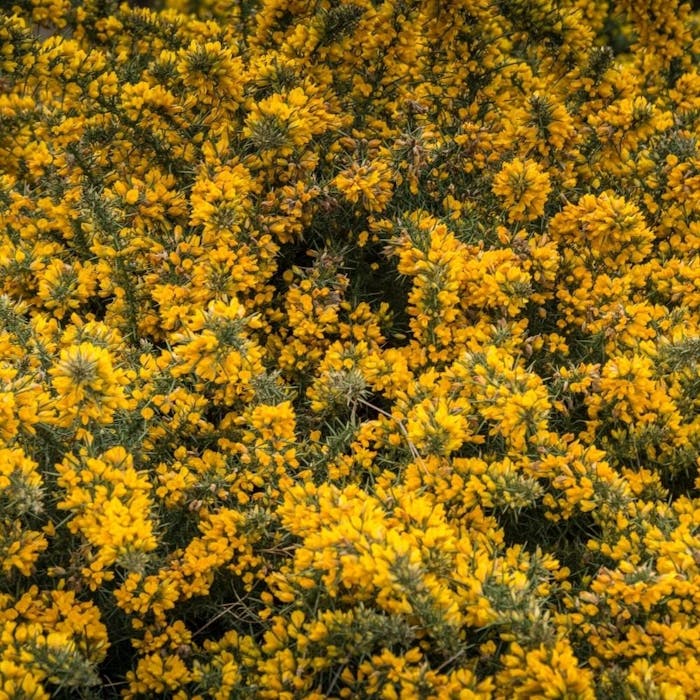
Gorse - tough staple of British heathland
Gorse is a tough prickly yellow-flowered shrub of the pea family, popularly associated with the wild windy landscapes of open moors around Britain. But it can be found in many habitats, from heaths and coastal grasslands to town verges, parks and gardens. It moat commonly comes into flower early in the year, but varieties may blossom throughout the year.
Common gorse (Ulex europaeus) is a large, evergreen shrub, covered in needle-like leaves and with distinctive yellow flowers during the spring and summer, which create a bright carpet of colour where the plant thrives in profusion. Gorse has a distinctive 'coconut and vanilla' smell.
There are three similar species of gorse in the UK: common gorse is widespread and flowers from January to June; western gorse flowers in late summer and autumn and is mainly found in western Britain; dwarf gorse flowers later and is mainly found in southern and eastern England. Western and dwarf gorse are almost identical in appearance to common gorse; except they and are low growing, unlike common gorse which can reach up to 2.5 metres in height.
Several bird species like to take shelter in gorse bushes as they are so dense and provide great protection during harsh weather. Gorse flowers are a good source of nectar for bees and butterflies.
Traditionally, common gorse was regularly collected from common land for a number of purposes: it provided fuel for firing bread ovens; was used as fodder for livestock; was bound up to make floor and chimney brushes; and was used as a colourant for painting Easter eggs. The seeds have traditonally been used to help rid the body of stones and to ease diarrhoea. They have also been found to contain a cardio-active alkaloid, Ulexine, which has been used to treat cardiac dropsy. The flowers were once infused in tea to ease jaundice and scarlet fever.
In order to prevent over-exploitation, there have historically been a wide range of conditions on harvesting gorse, such as those imposed in Oxfordshire following an 1820 Enclosure Act, where people were only allowed as much as they could carry on their backs. In Hertfordshire there were regulations prohibiting cutting outside a certain parish and digging-up entire bushes. In some places even the type and size of cutting implements have been specified.
Gorse was voted the County Flower of Belfast.
Further reading
Links to external websites are not maintained by Bite Sized Britain. They are provided to give users access to additional information. Bite Sized Britain is not responsible for the content of these external websites.
